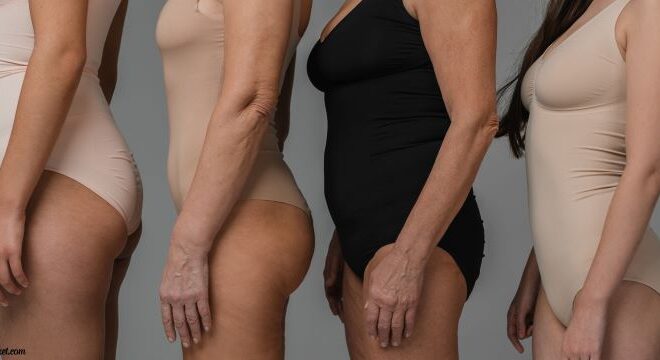
How to Choose the Right Men’s Indoor Soccer Shoes: A Comprehensive Guide
Key Takeaways:
- Factors that contribute to the right choice of men’s indoor soccer shoes.
- The importance of matching the shoe features with playing style and court type.
- The role of proper fit and comfort in performance and injury prevention.
- Care and maintenance tips to prolong the life of indoor soccer shoes.
Table of Contents:
- Understanding Indoor Soccer
- Types of Indoor Soccer Shoes
- Fit and Comfort
- Materials and Durability
- Traction and Surface Compatibility
- Style and Personal Preference
- Injury Prevention and Protective Features
- Budget Considerations
- Care and Maintenance
- Making the Purchase: Final Thoughts
Understanding Indoor Soccer
Indoor soccer is a fast-paced, dynamic variant of the world’s most popular sport. It requires players to perform at high-intensity levels with focus, skill, and agility. Because of the specific demands of the game — from the more complex playing surfaces to the smaller, bounded fields — having the right gear is critical. At the heart of a player’s equipment is their choice of shoes, which can significantly affect their ability to perform on the court.
Selecting the right shoes for indoor soccer is not just about comfort; it’s also about enhancing performance through improved grip and stability on slick indoor surfaces. Additionally, shoes designed for indoor soccer often feature a flatter sole and less pronounced cleats, which help facilitate quicker movements and better ball control. Finally, because indoor soccer involves continuous and rapid directional changes, the shoes must provide excellent support to prevent injuries and maintain agility throughout the game.
Types of Indoor Soccer Shoes
Several types of men’s indoor soccer shoes are designed to offer specific benefits. The classic indoor shoe features a flat, gum rubber sole for optimum grip on slick surfaces. Alternatively, some shoes come with a slightly thicker and more cushioned sole, offering better impact protection for more complex surfaces. Players must understand the types available and choose based on where and how they play the game.
The material of the shoe upper can also vary, with options ranging from synthetic materials to natural leather, each providing different levels of durability and flexibility. Players may prefer breathable fabrics that keep the feet cool and dry during intense matches. Some indoor soccer shoes integrate technologies like reinforced toe areas or asymmetrical lacing to enhance ball control and foot stability during play.
Fit and Comfort
A shoe’s fit can profoundly impact a player’s game. Shoes that fit well will be more comfortable and improve a player’s touch and feel for the ball. It is essential to look for a snug fit that doesn’t impede circulation and provides enough room to move and flex the toes. The heel should be secure with no slippage, and the midsole should offer enough cushioning to absorb the shock from playing on hard surfaces.
When trying on indoor soccer shoes, wearing the same type of socks used during games to ensure the best possible fit is essential. Additionally, testing shoes when feet are typically more swollen later in the day can help simulate conditions during an actual match. Lastly, players should consider any unique foot needs, such as arch support or extra padding, to further customize the fit and enhance their overall comfort and performance on the court.
Materials and Durability
Indoor soccer shoes can be made from various materials, from natural leather to synthetic alternatives. Each material has advantages; for instance, leather often offers better fit and feel over time, while synthetics can provide superior water resistance and durability. Players should consider how usually they play and the level of intensity to choose a shoe that will not only perform well but also withstand the rigors of the game over time.
Traction and Surface Compatibility
The sole of an indoor soccer shoe affects traction and how well a player can control their movements on different playing surfaces. Gum rubber soles with patterned grips are typically ideal for smooth indoor courts, while more aggressive treads may be necessary for indoor turf. It’s also essential to ensure the sole is non-marking, as many indoor facilities require this to protect the playing surface.
Style and Personal Preference
While functionality should be the primary focus when choosing indoor soccer shoes, the style also plays a significant role. A player’s shoes often reflect their personality on the court and can boost confidence during play. Modern designs offer various colors and patterns, so finding a shoe that performs well and aligns with your style has always been more challenging.
Injury Prevention and Protective Features
An often overlooked aspect of indoor soccer shoes is their ability to prevent injuries. Good indoor soccer shoes should have adequate arch support, a sturdy heel counter, and ample cushioning to protect against the stresses of the game. Together, these features help reduce the risk of injuries such as sprains and strains, which are more common on the hard surfaces of indoor arenas.
Budget Considerations
Indoor soccer shoes range widely in price, with options for every budget. Higher-priced options may offer additional technologies or premium materials, while more affordable shoes might focus on essential features without the bells and whistles. Players should weigh their needs against their budget to find the best value.
Care and Maintenance
Proper care and maintenance of indoor soccer shoes can significantly extend their lifespan. This includes regular cleaning, using appropriate techniques for leather or synthetic materials, and ensuring they are thoroughly dry between uses. Shoe maintenance is not only about appearance; it’s about preserving the functionality and safety features of the footwear.
Making the Purchase: Final Thoughts
Choosing the right pair of men’s indoor soccer shoes involves considering many factors, including fit, materials, surface compatibility, and personal style. By assessing these carefully, players can enhance their game, prevent injuries, and enjoy the sport entirely. The right pair of shoes is a crucial component of a player’s indoor soccer gear, and investing time into making the right choice will pay dividends on the court.



